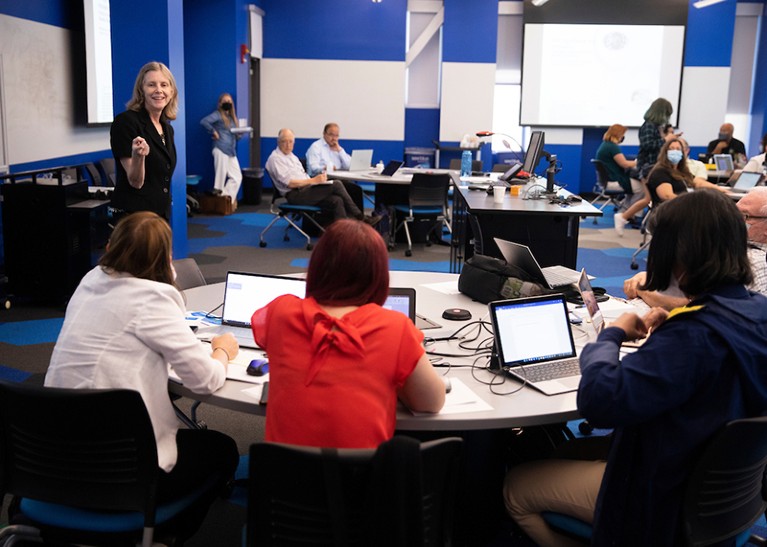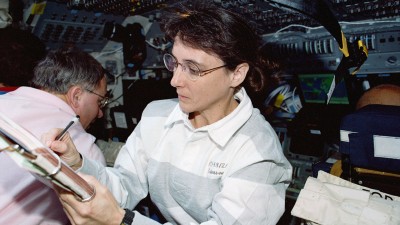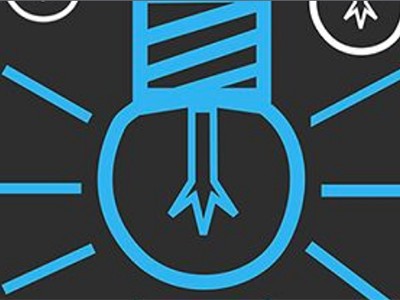
Community support groups help researchers to write successful grant proposals.Credit: Virojt Changyencham/Getty
Chemist David Sanabria-Ríos was no stranger to receiving the cold shoulder from the US National Institutes of Health (NIH).
Several times, he had applied for funding for his research on synthesizing small, new molecules at the Inter American University of Puerto Rico Metropolitan Campus in San Juan. But Sanabria-Ríos says that his proposals often fared worse than being rejected — they were not even discussed or scored by reviewers at the NIH, the largest biomedical research funder in the world. Although this outcome stings, it’s fairly common.
The NIH receives tens of thousands of grant proposals every year and it can give dedicated feedback to only a fraction of those. An even smaller fraction is ultimately funded.
A funding adviser’s guide to writing a great grant application
Sanabria-Ríos says that although his science was sound, his problem was a lack of effective grant writing. Part of this issue stemmed from a language barrier he faced when writing grant proposals in English instead of his native Spanish. However, a lack of grant-related resources at his university, such as a grants office to assist in editing proposals, added to this disconnect.
“My university is mainly an undergraduate institution,” Sanabria-Ríos says. “We don’t have specific programmes” to help with grant-writing, such as are found at the Massachusetts Institute of Technology in Cambridge and other institutions.
Sanabria-Ríos is not alone. Writing grant proposals is necessary to advance in the scientific world, but the challenges that have to be overcome to get research funded can feel more intense at small and less research-intensive universities.
For example, in the United States, research-intensive universities that regularly receive top-tier grants from institutions such as the NIH are known as R1 or ‘very high research activity’ institutions. They typically have administrative offices dedicated to moving grant paperwork along and infrastructure to support researchers who take time off from teaching to write proposals. However, for researchers at smaller institutions in the United States that mainly serve undergraduates and have a large proportion of students from minority backgrounds, such resources for grant writing are scarce.
To bridge that gap, researchers on these campuses are using their shared experiences to help each other stay on track and overcome what might be unfamiliar logistical obstacles in their grant proposals, such as crafting a realistic research budget or carving out time in their busy schedules to write. For some researchers, this might mean holding informal writing sessions together and sharing goals over coffee; for others, it means finding mentorship outside their university.
Katia Del Rio-Tsonis missed out on this kind of community support when she began her research career at the National Autonomous University of Mexico in Cuernavaca in the 1990s. Informal support and mentorship between colleagues when writing grants might be even more valuable than resources that are offered by institutions, says Del Rio-Tsonis, who is now a biologist at Miami University in Oxford, Ohio. Miami University is an R2 institution — defined as having ‘high research activity’ — that has a large proportion of undergraduate students compared with postgraduate students.
“There has been an incredible change in the support,” she says. “A lot of us try to find colleagues who can be helpful.”
Pulling together from grass roots
When biologist Kelly Tseng arrived at the University of Nevada, Las Vegas (UNLV), in 2012, writing grants was just one of many new challenges she faced. UNLV is a minority-serving institution — that is, it has a significant number of students from one or more minority groups including Indigenous people and those from Black, Hispanic, Asian and Pacific Islander backgrounds — and it achieved R1 status in 2018.
For new investigators, Tseng says, there can be a lot of obstacles that eat away at the time researchers can dedicate to grant writing, such as setting up their independent laboratory or taking on a full teaching load. The grant-writing process itself can also be confusing for those with limited experience, she says.
I’ve built a career without a big golden grant. Here’s how
“It’s not just writing the proposal but there are many other documents that a researcher needs to prepare, such as a budget, that need to be submitted at the same time,” Tseng says. “And sometimes you focus so much on the proposal that you forget about the other parts.”
Biologist Melissa Harrington is the associate vice-president of the research-development team at Delaware State University in Dover, an R2 institution and a historically Black college and university. Harrington says that a lot of new investigators who arrive at Delaware State are starting their grant experience from scratch.
Many, she says, “have never seen a grant proposal; they don’t even know what it looks like. I see that as the biggest obstacle.”
Having earned a PhD from Harvard University in Cambridge, Massachusetts, before arriving at UNLV, Tseng was familiar with what a good grant proposal looked like. However, she still faced a steep learning curve when it came to submitting her own proposals. One resource that helped her to work through those growing pains was attending informal grant clubs hosted by faculty members in her department.
“This was started by a couple of senior faculty members who came from research-intensive institutions, who had success with grant writing for the NIH,” Tseng says.
The idea behind the club, she explains, is that anyone working on a proposal in the cellular biology department could sign up for a weekly slot to bring in a section of their draft proposal and receive feedback from two senior faculty members. These draft sections were also shared with any other faculty members who were interested in attending the meetings and they could listen in on the feedback given.
“Many people who participated found it really helpful to clarify their proposal,” Tseng says. “Sometimes, when you spend a lot of time writing a proposal, it becomes hard to see the weaknesses in it.”
For Wendy Beane, a biologist at Western Michigan University in Kalamazoo, the accountability she needed to keep her proposals on track was missing. She says that although her university, an R2 institution with a high percentage of undergraduate students compared with postgraduate students, offers some support for grant writing, colleagues also turn to each other for help with staying on top of grant deadlines.
Most scientists don’t enjoy writing grants. Here’s how to change that
“The biggest issue with grant writing is that it’s probably the most important thing you need to do, but it always gets put to the bottom of the list” when you have an assay experiment to run or a deadline for submitting a talk, Beane says. “Holding each other accountable is something we did at the grass-roots level.”
When she was a junior faculty member, Beane says, she and a group of her peers would come together and set goals with each other, either through in-person conversations or by e-mail, to help them achieve milestones during their grant writing, such as submitting a proposal by the end of a grant application cycle. Beane says that the cohort also held small group-writing sessions in a colleague’s office once a week for about an hour.
“We’d say ‘we’re going to get together in so-and-so’s office, bring your coffee’ and then we would just sit in the same room and type,” Beane says. A strict no-talking rule was implemented during dedicated writing time.
The importance of mentorship
Although group support can be important for success, it doesn’t necessarily replace one-on-one guidance through mentorship, Beane says. As she sees it, there are three levels of mentorship that are important to draw on when writing a grant: feedback from someone outside your field, feedback from someone in your field but outside your institution and your ‘work best friend’ who will be candid with you.
The mentor from an external institution can be particularly beneficial, says Del Rio-Tsonis, who has been a mentor to Tseng. “Cross-institutional mentoring is important because then you don’t have a bias and you don’t have to deal with departmental politics or jealousy,” she says. “You’re just helping with the science.”
But it’s not always easy for new investigators to make these mentorship connections. At Delaware State, Harrington says, such connections are supported by an NIH programme called Centers of Biomedical Research Excellence (COBRE) that puts in place a more formal mentorship programme, which is both internal and external to an institution.

A grant-writing training session at a 2022 Interactive Mentoring to Enhance Research Skills (iMERS) workshop at the University of Kentucky in Lexington.Credit: University of Kentucky Photography
For Sanabria-Ríos, mentorship came from a programme at the University of Kentucky in Lexington called Interactive Mentoring to Enhance Research Skills (iMERS), which offers free mentorship to faculty members at minority-serving institutions who are looking to land a NIH grant.
Melissa Nickell is the centre administrator for iMERS’ sister programme, the SuRE Resource Center, which is also based at University of Kentucky. Nickell says that these programmes work mainly with resource-limited institutions that have researchers who have great scientific ideas, but might lack some of the nuts and bolts for successful grant writing. For example, some scientists might not fully appreciate the details that are needed to make a grant proposal both compliant and competitive, she says.
Sanabria-Ríos first began working with his iMERS mentor virtually during the COVID-19 pandemic, in May 2020. His mentor, Sarah D’Orazio, a microbiologist at the University of Kentucky’s College of Medicine, advised him on how to write persuasively and for a non-specialist audience, because NIH reviewers are not always in a researcher’s field or subfield. Taking that advice to heart, Sanabria-Ríos submitted his grant proposal to the NIH in February 2021 and received a score and constructive feedback for the first time — but the proposal was ultimately rejected.
“When I received my score, I was happy,” he says. “It was a good score, but not a fundable score. But I recognized it as an invitation for resubmission.”
Nature collection: Mentoring
In June 2022, Sanabria-Ríos met D’Orazio in person in Lexington, and they worked together to provide targeted revisions in response to the harshest bits of feedback on his proposal. He resubmitted the proposal in February last year for NIH R15 funding, which supports small-scale research projects at mainly undergraduate institutions and funds researchers who have not previously received significant NIH grants. He proposed to develop synthetic fatty acids, which can form holes in bacterial membranes and ultimately lead to cell death, as a new type of antibiotic that might be difficult for bacteria to develop resistance against. His resubmission won approval.
“This is the first R15 grant that my institution has received in its history,” he says. “We are working hard to enhance the level of research at our institution. This is a specific example of moving in that direction.”
Even for researchers at small, low-resourced institutions, support for grant writing will look different at different universities. What could be helpful for some scientists, Beane says, might come across as micromanaging for others. What remains crucial is the sense of community and support that researchers find with each other.
“Most of us face more noes than yeses” when it comes to grant proposals being funded, Tseng says. “It’s always helpful to have others to talk with about it and to learn from each other’s experiences. It’s really just a support to keep writing and keep submitting.”






